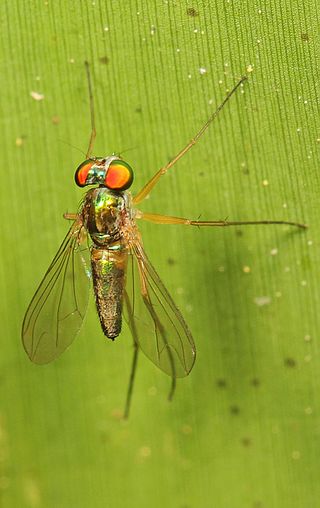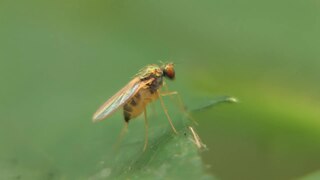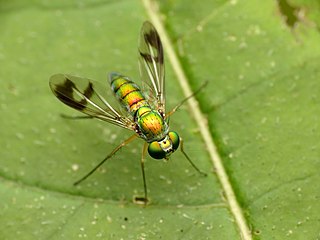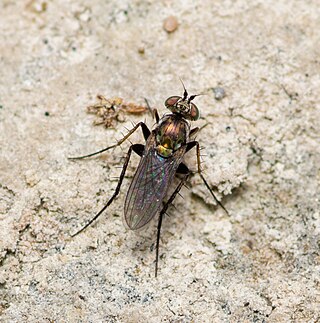
Amblypsilopus is a genus of flies in the family Dolichopodidae. It is a large genus, with about 350 species recorded. However, it is possibly polyphyletic.
Bickeliolus is a genus of flies in the family Dolichopodidae. It was originally a subgenus of Ethiosciapus, but was later raised to genus rank in 1998.
Chaetogonopteron is a genus of flies in the family Dolichopodidae.

Chrysosoma is a genus of flies in the family Dolichopodidae. It is a large genus, with more than 200 species distributed in the Old World and Oceania.

Chrysotimus is a genus of longlegged flies in the family Dolichopodidae. It is cosmopolitan in distribution, but it is probably paraphyletic with respect to several genera of limited distribution.

Condylostylus is a genus of flies in the family Dolichopodidae. It is the second largest genus in the subfamily Sciapodinae, with more than 250 species included. It has a high diversity in the Neotropical realm, where 70% of the species occur.

Diaphorus is a genus of flies in the family Dolichopodidae. Lyroneurus was formerly considered a subgenus, but is now either treated as a synonym of Chrysotus or treated as a distinct genus.
Dytomyia is a genus of flies in the family Dolichopodidae. It is known from Australia, Madagascar and Kenya, with an undescribed species from Papua New Guinea.
Krakatauia is a genus of flies in the family Dolichopodidae.

Lichtwardtia is a genus of flies in the family Dolichopodidae. It is known from the Afrotropical, Oriental and Australasian realms. It can be recognised by its zigzag-shaped M vein on the wings, and its feather-like hairs on the apex segment of the antennae. In a phylogenetic analysis of the subfamily Dolichopodinae by Scott E. Brooks in 2005, Lichtwardtia is considered to be a synonym of Dolichopus, but subsequent authors have retained it as a valid genus.

Medetera is a large genus of flies in the family Dolichopodidae. It includes about 350 species worldwide. The adults are commonly found resting on vertical surfaces such as tree trunks, on which they have a characteristic vertical upright stance. Because of this stance, they are sometimes known as "woodpecker flies". Medetera adults are predators of soft-bodied arthropods, while the larvae are predators of bark beetle larvae.
Mesorhaga is a genus of flies in the family Dolichopodidae.

Paraclius is a genus of flies in the family Dolichopodidae. It is currently considered a polyphyletic assemblage of species.

Parentia is a large genus of flies in the family Dolichopodidae.

Thinophilus is a genus of flies in the family Dolichopodidae. It includes about 146 described species distributed worldwide. Most species of the genus are found in coastal habitats, while a few species are found in freshwater habitats.
Urodolichus is a genus of fly in the family Dolichopodidae. It is known from the Afrotropical realm, Indomalayan realm and Australasian realm. It has been placed in either Rhaphiinae or Diaphorinae, though Grichanov & Brooks (2017) consider the genus to be incertae sedis within the family Dolichopodidae.

Peloropeodinae is a subfamily of flies in the family Dolichopodidae. In some classifications, the genera of the subfamily are included in Sympycninae. According to a molecular phylogenetic analysis of the family Dolichopodidae by Germann et al. (2011), the subfamily is polyphyletic.










